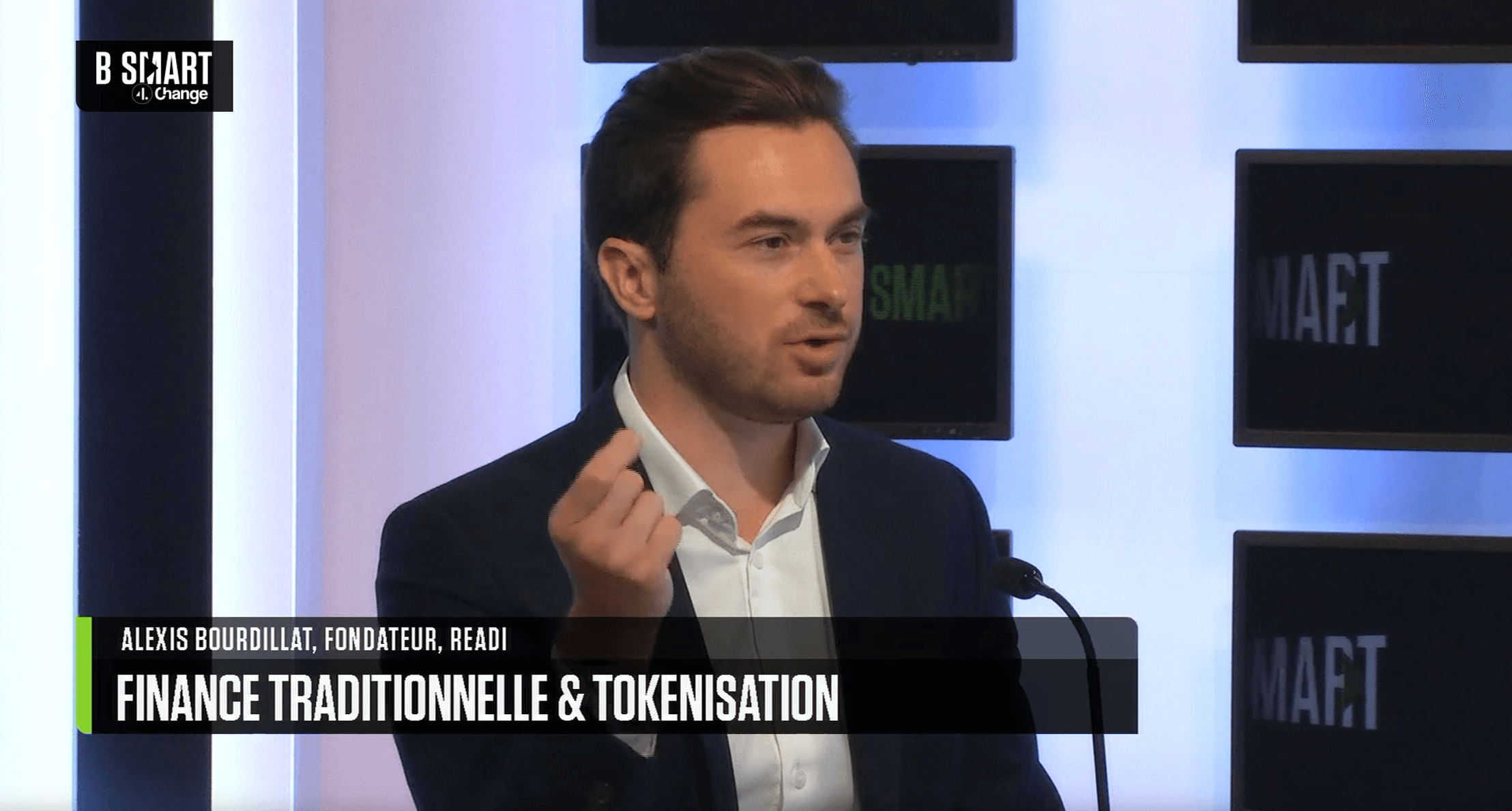Readi explains Tokenization on the Smart Patrimoine show
Oct. 3, 2024

Tokenization Explained on the Smart Patrimoine Show
Alexis Bourdillat, Director of Research and co-founder of Readi, had the opportunity to discuss how tokenization works during his appearance on B SMART, on this Wednesday episode.
Watch the video of his intervention in "l'Écho des Cryptos," the crypto-asset rendez-vous of the Smart Patrimoine show, below.
Lower operational costs for asset issuers
Blockchain allows issuers to eliminate many intermediaries in the distribution chain. In fact, blockchain is identified in regulations as a distributed ledger technology.
All recorded transactions are public, validated in a decentralized manner, and immutable. It is therefore impossible to alter what has been recorded. It is a perfect tool for record-keeping, securities reconciliation, and validation of a fund's assets or liabilities.
Smart contracts add a layer of programmability: they are computer code that is triggered by human intervention (a transaction) or systematically. They allow for the automation of many "logical" procedures, which only need to be coded into a contract.
A Simplified Distribution Channel
Investment solution managers are delighted: their products can be placed with the ultimate investor through a single intermediary, a tokenization platform.
The platform handles onboarding the investor and ensures compliance with anti-money laundering, KYC, and KYB regulations. Fund managers, debt issuers, product structurers, and private companies can then issue their products directly to accredited investors through a simple blockchain transaction.
Today, private companies have a "invest in our company" module on the investor page of their website. In just a few clicks, an investor can acquire shares in the company, fully automated and without any contact.
An unlimited market opens up for investors
Thanks to this simplified distribution channel, many asset classes are added to the investment universe accessible to investors. It is possible on the blockchain to invest in unlisted companies, private debt or private equity funds, and even physical precious metals that can be delivered.
Once an investor holds an asset token in their portfolio, a multitude of opportunities opens up. The interest of the blockchain lies in the fact that a token holder can connect their wallet to all applications that accept it. For example, an investor could lend their shares, use them as collateral to borrow on a lending platform, gain leverage to access another asset class, or connect to innovative exchange platforms... These solutions are deployed each month by market leaders.